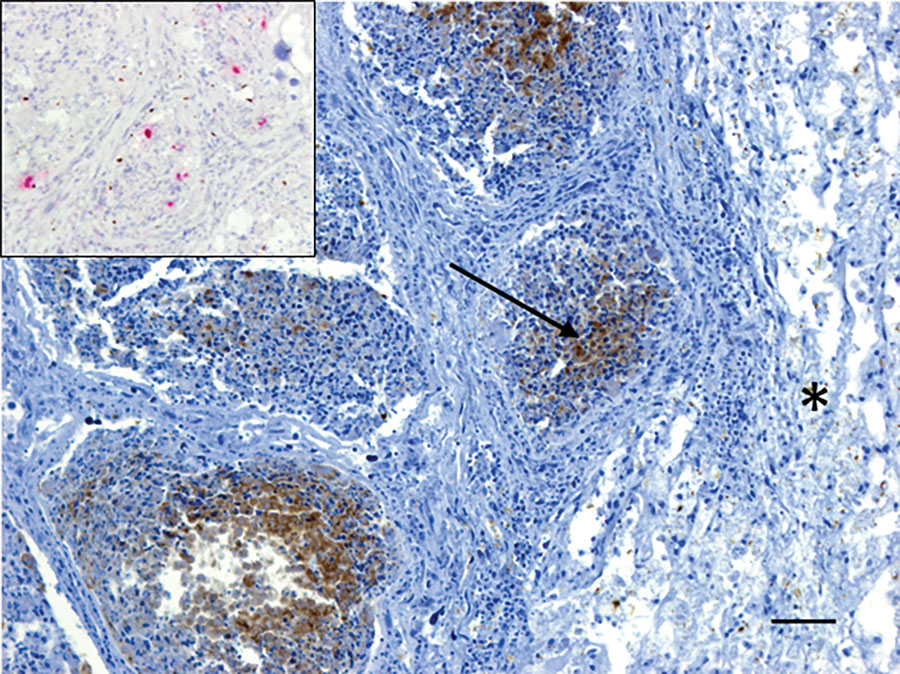Volume 28, Number 7—July 2022
Dispatch
Isolation and Characterization of Novel Reassortant Influenza A(H10N7) Virus in a Harbor Seal, British Columbia, Canada
Figure 1

Figure 1. Immunohistochemistry testing for influenza A virus antigen in lung tissue of an adult male harbor seal, British Columbia, Canada. Viral antigen (arrow) was detected by immunohistochemistry within the bronchiolar-associated lymphoid tissue but not in adjacent lung parenchyma (*). Viral RNA could also be detected in bronchiolar-associated lymphoid tissue by in situ hybridization (inset, pink areas). Scale bar = 50 μm.
Page created: April 18, 2022
Page updated: June 18, 2022
Page reviewed: June 18, 2022
The conclusions, findings, and opinions expressed by authors contributing to this journal do not necessarily reflect the official position of the U.S. Department of Health and Human Services, the Public Health Service, the Centers for Disease Control and Prevention, or the authors' affiliated institutions. Use of trade names is for identification only and does not imply endorsement by any of the groups named above.